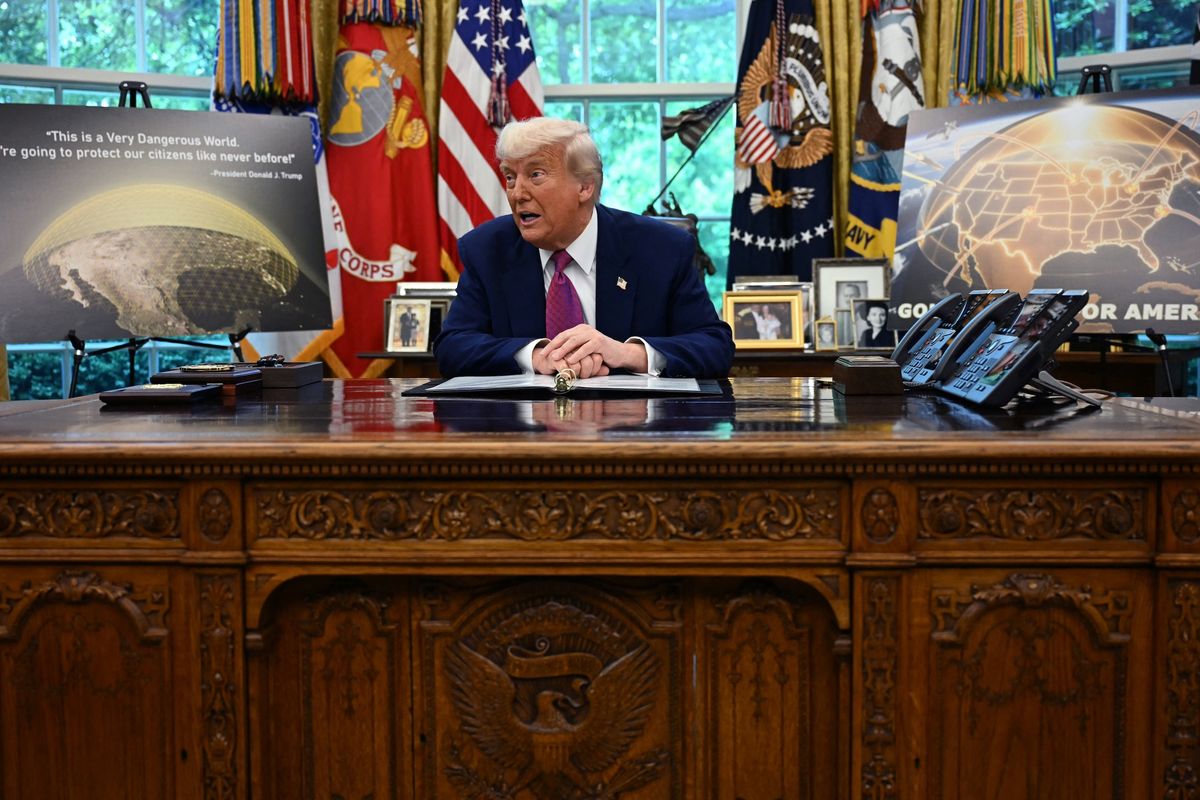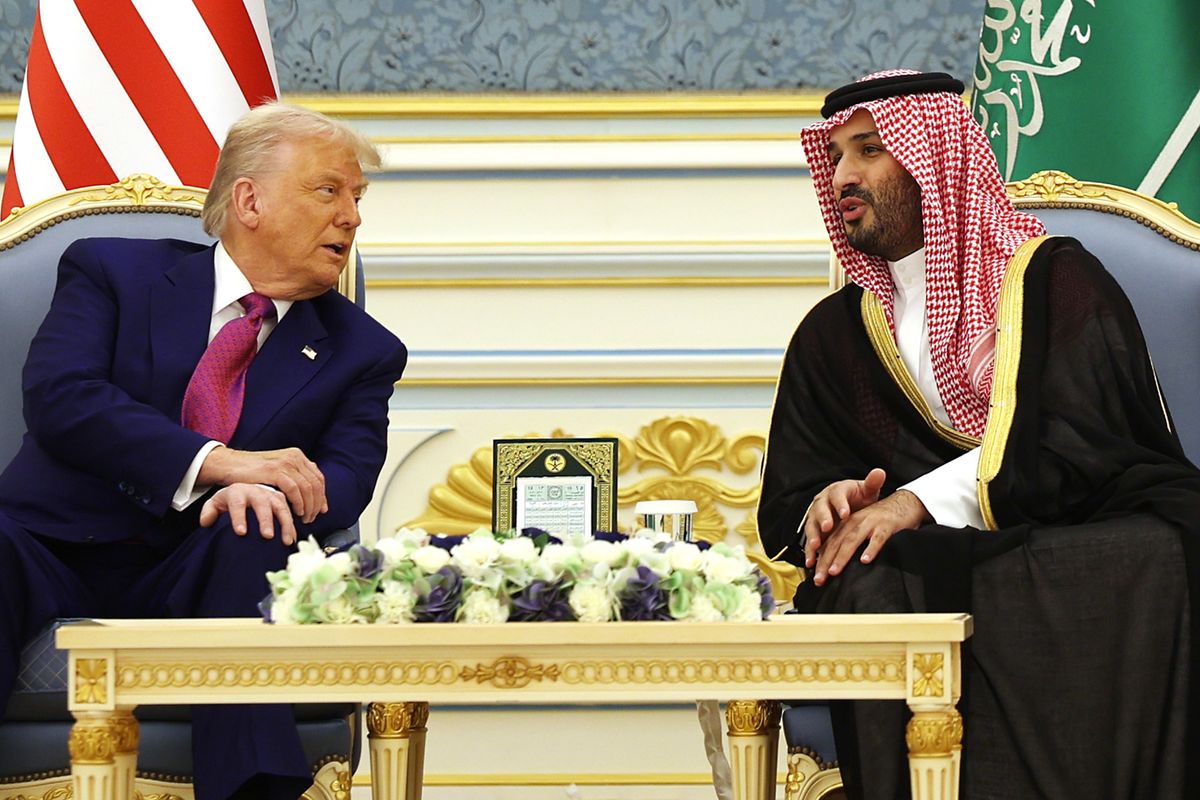OPINION — Two reports released last Wednesday raise separate questions about the ability of the Defense Department (DoD) and Intelligence Community (IC) to meet the challenges of future computerized warfare.
One report, from the Government Accountability Office (GAO), is more traditional in nature. It deals with the DoD and IC not having developed an effective common approach to acquiring commercial satellite imagery, nor have they provided guidance to their various agencies on use of commercial analytic services that use remote sensor data.
GAO suggested, for example, “Defined roles could include the Army buying GEOINT (geospatial intelligence) analytics relevant to ground warfare, or the Navy buying GEOINT analytics on sea lanes which use remote sensing data. Such formal roles have not been defined.”
The second report, from the Center for Strategic and International Studies, is more complex as indicated by its title: Software–Defined Warfare: Architecting the DOD’s Transition to the Digital Age.
Written by retired-Air Force Lt. Gen. John Shanahan, the first Director of the Defense Department’s Joint Artificial Intelligence Center (JAIC) and Nand Mulchandani, JAIC’s former Chief Technology Officer [now the first Chief Technology Officer at CIA], the report describes “incredible new opportunities for human-machine teamwork, in which the roles of humans and machines are optimized based upon what each does best. Business objectives, goals, and the overall architecture of the systems are still all set by humans. The actual operations are handled by software, based on parameters established by humans.”
Shanahan and Mulchandani write, “DOD outspends, out-equips, and out-trains its competitors. It is also an industrial-age, hardware-centric organization that has the ‘biggest, the mostest, and the bestest military capital investments: tanks, ships, aircraft, and everything in between.”
However, they believe, “Unfortunately, in today’s world, hardware is ‘old-school’—low-margin, commodity products that are manufactured, stored, shipped, and consumed. After depreciation and excessive wear and tear, hardware is scrapped for parts or ends up in a boneyard.”
From a modern tech point of view, Shanahan and Mulchandani say, “The military’s hardware systems are built to wrap multiple layers of metal and protection around fragile human beings who operate these machines under fire and extreme levels of stress, with the planning and orders coming from groups of people watching screens and integrating information through PowerPoint and Excel.”
Despite DoD’s current ability to accomplish incredible things, Shanahan and Mulchandani write that the Department is “lagging woefully behind the commercial software industry’s state of the art—in everything from automating back-office functions to providing digital warfighting services to its customers.”
Shanahan and Mulchandani argue that DoD’s monopoly in buying war-fighting equipment protects it from traditional capitalistic competition and allows it to avoid adopting “new technologies, change its legacy workflows and processes, and design and experiment with new operating concepts.”
The Cipher Brief Threat Conference is happening Oct 9-11. If your organization is in the business of national security, you have to ask yourself, can you afford to miss it? Request your seat at the table.
“Equally problematic,” the two authors say, “the massive DOD bureaucracy struggles with the kind of periodic ‘tech refresh’ that has been instrumental to commercial industry success. While it is insulated from market competition within the U.S. economy, the DoD is not immune from the kind of revolutionary, secular, and wide-ranging technological changes happening outside the government. Nor is it immune from the threat of competition with other militaries around the world.”
Shanahan and Mulchandani state, “Either the DoD will change itself, or its competitors will force it to change—after it might be too late.”
The new design and architecture that DoD needs, according to the authors, will “support dramatically faster decision-making and execution speeds; allow for rapidly updating and modifying systems; lower the cost structure of building and deploying these systems; and upend the marginal cost and speed of delivering new functionality.
For Shanahan and Mulchandani, “The key to this architecture lies in software…Software needs to be at the core of every business and operating model before any business can hope to gain an enduring competitive advantage. The DoD is no different.”
For example, unmanned aerial vehicles (UAVs) are deployed across multiple areas of responsibility (AORs). As the DoD integrates more AI-based (Artificial Intelligence-based) software into these systems, the data the algorithms are trained on for each AOR can vary widely.
For example, the data from Eastern Europe, which has snowy or muddy fields, and the South China Sea, which has open water and scattered islands, can be very different. AI software performs optimally when it is retrained from new data collected in an operational setting. In the digital age, fielded AI models must be updated regularly.
Today, there are few operational examples in the DoD of AI software fielded via continuous integration/continuous delivery even though the approach was routinized in commercial industry a long time ago.
The idea that fielded AI software is never finished and requires continuous updates is not a niche idea.
In the Shanahan-Mulchandani world, “At some point, almost every piece of software will be AI-enabled and, if embedded into hardware systems, will need to be designed for continuous and even over-the-air remote updates. As the DoD operationalizes this at scale, it will have to become much smarter about deploying just-in-time software on local systems custom-tailored to the mission.”
They believe, “Each armed service should be able to deliver over-the-air patches and new apps to each OS [operating system] for improving functionality and fixing bugs. There is no question that in the first phase of any war, the United States’ adversaries will be launching a number of “zero-day” cyberattacks against its weapons systems vulnerabilities.”
In future warfare, they say, “The country’s ability to get back into the fight will be dependent on the DoD’s ability to spin patches for these vulnerabilities, clean up its endpoints, and do rapid updates of its systems before booting them up again. If the DoD adopted a stateless, just-in-time software deployment model, the time needed to close this loop will be dramatically shorter than having to clean up malware off of a stateful [continuously responding] software/hardware system and ensure that it is malware free.”
One example of another needed DoD capability, according to the Shanahan-Mulchandani report, is tracking activities.
They point out that, “anyone can track the delivery of a hamburger or pizza on their phone in real time, it is unfathomable that the DoD’s combatant commanders cannot gain real-time visibility into the endpoint systems that are under their management.”
The Cipher Brief hosts expert-level briefings on national security issues for Subscriber+Members that help provide context around today’s national security issues and what they mean for business. Upgrade your status to Subscriber+ today.
Today, they say, “Almost every [civilian] product used is heavily instrumented to measure a variety of data: real-time control of the endpoint system, status of the endpoint, and (on the development side) understanding what features end users are utilizing.”
Although there are hundreds of commercial products to both instrument and track usage, DoD endpoint hardware systems, “need to be designed and built…to include sensors for every part of the system that could be relevant for remote control and orchestration…The simplest and most telling example [of what’s needed] is that many of the resources and munitions on all airplanes and tanks are still not tracked automatically—with few exceptions and rarely in real time.”
Shanahan and Mulchandani argue that, “The DoD should adopt these core concepts as it designs, develops, fields, and sustains all its weapon systems and supporting hardware. Think of a software ‘core’ with an outer hardware ‘shell’—in essence, running the logic, planning, and optimization in the software plane, with the hardware tethered to the end of a long chain of software.”
In their idealized architecture, “End-to-end software architecture connects all the relevant sensors (inputs) and outputs (weapons systems). It would also make it easier to model all the right workflows (kill chains), along with predictive intelligence systems, logistics, targeting, and fires, all of which would be integrated into a single architecture built on a few large-scale core platforms.” Although they preach “software-defined warfare is the way of the future,” they add, “Of course, this should never mean that humans are redundant or uninvolved.”
I also think worth noting that during last Wednesday’s CSIS panel discussion on the Software–Defined Warfare report, Mulchandani, who co-founded and sold several Silicon Valley firms before joining DoD three years ago, was asked about his new job as the first Chief Technology Officer at CIA.
“It is truly the coolest job in the world,” was his first response before adding, “The breadth and depth of tech at the CIA is truly, truly unbelievable…This organization obviously cannot do what it is tasked to do without having that level of ‘game,’ but the proof is that the tech is so wide and so distributed.”
He found after his first months at CIA that, “The Agency knows how to move and move fast, but what happens is the focus is on the mission and getting the job done…It really is not a focus on ‘we’re going to clean this all up and build this and that’,” as it apparently is at DoD, adding, “There are parts [at CIA] that are enterprise-scaled, internet-scaled to a point where it rivals the best in Silicon Valley. And then, we also build things like a one-off unit like a shoe-phone,” a reference to a gadget in the old CIA-like TV sitcom, Get Smart.
Mulchandani went on to say that CIA Director William Burns “has made technology one of his top priorities,” citing, “the creation of the new mission center 2TMC.” That’s shorthand for the Transnational and Technology Mission Center which will focus on foreign technological developments which have made clandestine activities more difficult. As a result, CIA case officers and their agents must deal with constant electronic surveillance, facial recognition and biometric tracking tools. In that instance, the future is already here.
Read more expert-driven national security news, insight and analysis in The Cipher Brief












